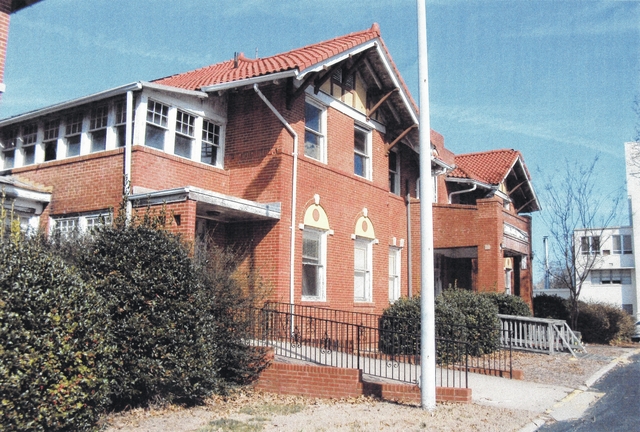At age 28, Dr. Charles I. Allen faced a turning point in his life.
He thought back to his student days at Wake Forest College and medical training at Columbia University, then a year with the international health commission sponsored by the Rockefeller Foundation, and another year with a hospital unit in France treating injured American soldiers during World War I.
Now, it was 1919 in a new world, but suddenly he saw his pathway forward. He came home to Wadesboro to become administrator of the new Anson County hospital (called Anson Sanitarium) and to marry Louise Lambeth, an Army nurse from Thomasville he had met in the war.
Allen was familiar with the special features of the hospital building, which had opened in 1913. The local paper, The Messenger and Intelligencer, described the facilities that year as follows:
“On the first floor, there will be three wards, dining room, diet kitchen, office, superintendent’s room, two private rooms, three bath rooms,” the paper read. “The second floor will have one operating room, six private rooms, one ward, sterilizing room, utility room, two bath rooms, diet kitchen, servant’s room. The kitchen, laundry, and boiler room will be in the basement. There will be a main elevator and a dumb elevator, and the entire building will be heated by hot water. There will be clothes chutes from the second floor to the basement.”
Wadesboro had several doctors by the early 1920s, but a shortage of nurses. The ambitious solution was to start a nursing school, so Allen put an ad in a medical magazine: “Wanted—superintendent of a 50-bed hospital near Charlotte.”
Elisabeth Finley responded. With her nursing degree, she already had a good-paying job in Chicago, but was tired of the freezing winters and willing to take a huge pay cut in the South. She accepted the job and moved into a small apartment in a house on Camden Road.
Allen could teach anatomy and physiology, but who would teach the other courses? He convinced Dr. James M. Davis, his buddy during their time in France, to move his practice from Winston-Salem to Wadesboro so he could also teach medical diseases and medicines. Both of them could teach obstetrics. Dr. James M. Covington, a doctor in Wadesboro for years, taught radiology.
The school opened in 1925, about the time that a nurses’ dormitory was constructed next to the hospital. Miss Finley became both school director and nursing superintendent.
One journalist called her “a petite lady who ruled with the authority of J. Edgar Hoover.” Another observer said she was “strict but fair.” She never married and devoted her life to the nurses and hospital — and lived to be 100 years old. During her retirement years, she bought a car and became the first female golfer in the region.
In 1937, the Levine family of Rockingham was about to have a baby, but their hometown didn’t have a hospital — so they came to Anson Hospital for the birth. The child was Leon Levine, who today is Charlotte’s best-known philanthropist.
Unfortunately, these two beautiful buildings were demolished this summer. Their architectural style was Spanish Mission. The buildings included red clay tile roofs, semi-circular arches over tall double-hung windows, ornamentation such as keystones in the window arches and open eaves with wooden brackets.
My guess is that the architect was Louis H. Asbury, a Charlotte native and MIT graduate who was one of the state’s first professional architects. Asbury was familiar with Anson County, having designed Morven Methodist Church in 1910 and First Baptist Church in Wadesboro in 1948.
Because of the leadership of Dr. Charles Allen, Elisabeth Finley and others, Anson County was fortunate to have one of the best early 20th-century hospitals in the region. Though we cannot bring back the structures, we can make more vigorous efforts to provide historical recognition to significant older buildings that remain.


